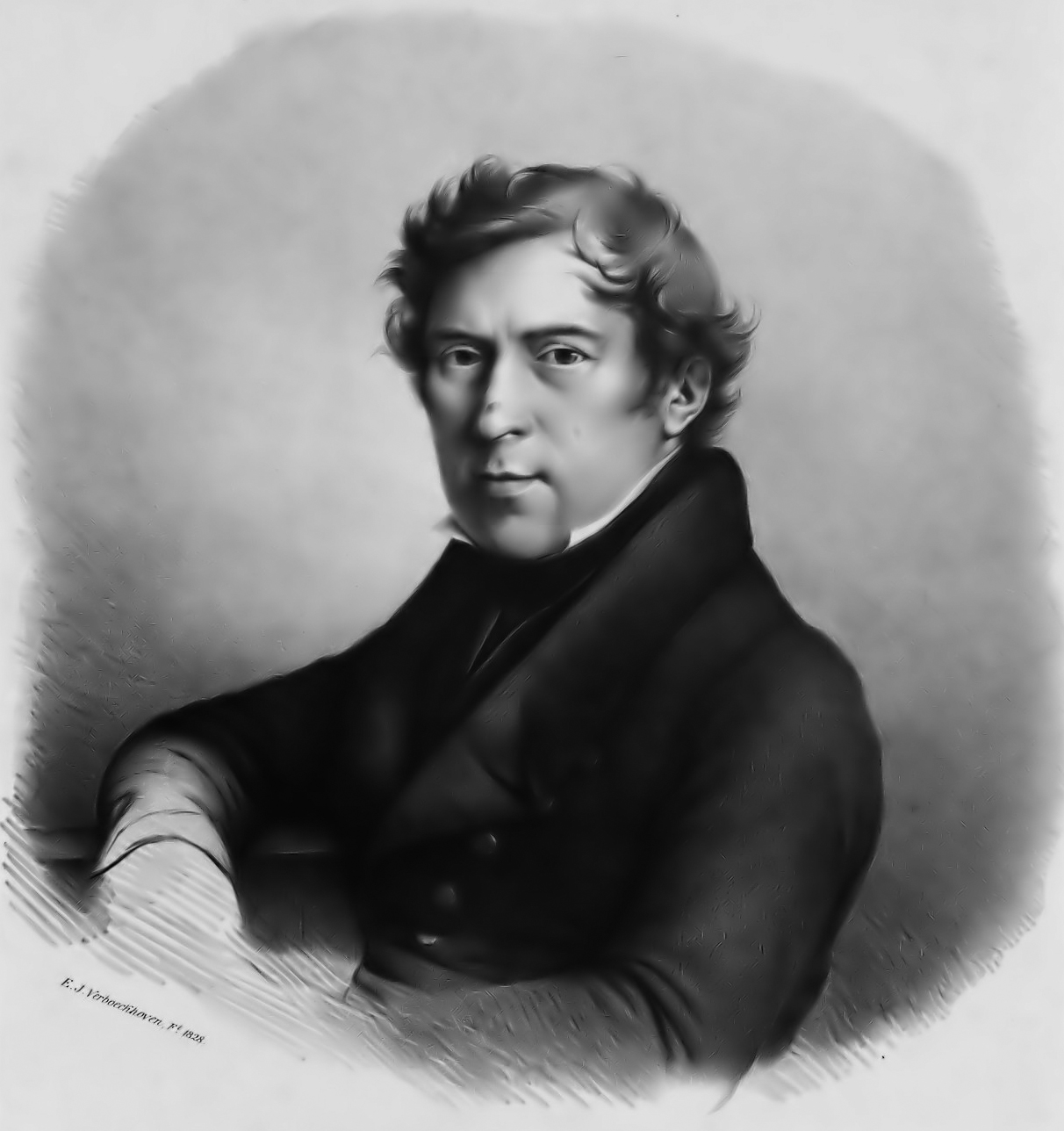(original Dutch, citaat van Schelfhout, uit zijn brief:) Vrolijk en opgeruimt, ben ik weder met reuze schreden begonen aan het tweede schilderij van de Heer Twent. [van het Wassenaarse landgoed Raaphorst, toen in bezit van Abraham Jacob Twent, die het landgoed in twee grote schilderijen wilde laten vereeuwigen]
Quote from Schelfhout, in a letter (with sketched figures) to an unknown friend, 21 Feb. 1823; as cited in Andreas Schelfhout - landschapschilder in Den Haag, Cyp Quarles van Ufford, Primavera Pers, (ISBN 978-90-5997-066-3), Leiden, p. 74
Andreas Schelfhout: Cytaty po angielsku
translation from original Dutch: Fons Heijnsbroek
(original Dutch, citaat van Schelfhout, uit zijn brief:) ..en daar wij nu in het Zomer leeven zijn heb ik geen truk [truc] van mij de Winter zoo danig voor den geest te halen dat ik in staat zoude zijn er een te kunnen schilderen.. ..en gij zou den gedult moeten nemen tot aanstaande winter.
Quote of Schelfhout in a letter to his client nl:Johannes Immerzeel, June 1832; as cited in 'Andreas Schelfhout Onsterfelijk schoon', Simonis & Buunk 2005 https://www.simonis-buunk.nl/wp-content/uploads/2016/06/catalogus_schelfhout.pdf, p. 17
translation from original Dutch: Fons Heijnsbroek
(original Dutch, citaat van Schelfhout, uit zijn brief:) Aan het museum [ver]koop men tans niets. Als men iets tans presanteert, wort men daar mede afgewezen, daar is geen geld bij kas. Ja Vriend, zo gaat het.. .Het is tans zeer dwaas met de oude kuns bij ons [in Den Haag]., ik hoor bijna van niets. Hoe gaat het te Rott.m? Ik geloof dat daar ook niet veel beweeging er mede is.
Quote from Schelfhout's letter to J. Immerzweel, 8 Jan. 1825; original text from the letter in the collection of the Koninklijke Bibliotheek (Royal Library), The Hague, no. 133 C12
(original Dutch, citaat van Schelfhout, uit zijn brief:) ..toen den verschrikkelijke storm en hogen watervloed allerverschrikkelijkst woede, begaf ik mij naar Schevelinge [=Scheveningen].. ..zee en lucht scheene een element te zijn; op de hoogte waar ik stond, want de zee had reeds duinen weggespoeld en stond tot aan het dorp, was het gezigt verschrikkelijk; het gejammer der bewoners akelig. - bij mijne thuiskomst heb ik echter dadelijk een schets daarvan op papier gebragt - doch die schets voldoet zo weinig, aan het geen men terplaatse zelve zag.. ..[waar] geen partij zig op deed waar van eigenlijk een tekening te maken was.. ..[dus] zal het nodig zijn dat ik [mij] nog een andere maal naar Scheveningen begeeft en die punten waar het water het meest gewoeld heeft afteschetsen..
Quote of Schelfhout in his letter to , 10 Feb. 1825; the original letter is in the collection of the Koninklijke Bibliotheek, Den Haag, inv. Nr: 133 C12, nr. 4
(original Dutch, citaat van Schelfhout, uit zijn brief:) Hierbij 3 teekeningen die ik voor UE. Vervaardigd hebt, het zal mij genoegelijk zijn, indien dezelve aan uwe verwachting en aan het [doel], waar voor zie dienen moeten [voor het maken van een schilderij], zullen beantwoorden. De 2 landschapjes zijn gedachten, maar het gene dat het maanlicht voorsteld, is het kasteel te Doorenwaart in Gelderland. Ik heb ook van dat zelve onderwerp een schilderij geschilderd waar van ik veel genoege gehad heb te Amsterdam [aangekocht door A. B. Roothaan aldaar]
Quote of Schelfhout in his letter to , 2 Dec. 1823; as cited in Andreas Schelfhout - landschapschilder in Den Haag, Cyp Quarles van Ufford, Primavera Pers, (ISBN 978-90-5997-066-3), Leiden, p. 49
“[four years younger! ], you better paint houses, you better focus yourself on townscapes.”
(translation from original Dutch: Fons Heijnsbroek, original Dutch, citaat van Schelfhout:) Jonge Bart [vier jaar jonger!], je mot liever huize schilderen, leg je liever toe op stadsgezigtjes.
short quote of Schelfhout, c. 1814; as cited in 'Van IJs naar Sneeuw - De ontwikkeling van het wintergezicht in de 19de eeuw', by Arsine Nazarian, July 2008 Utrecht Student-number: 03609533.8
Schelfhout was the four years older nephew of the painter and gave him this advice
translation from original Dutch: Fons Heijnsbroek
(original Dutch, citaat van Schelfhout, uit zijn brief:) ..[dat wij beiden, (Schelfhout èn J.C. Schotel )] elk een schilderij te maaken het welk bijde als het ware één gezigt zoude uitmaken [uitzicht van Scheveningen door Schotel, èn uitzicht op het centrum van Den Haag door Schelfhout].. ..[maar] onze schilderijen zullen dus te zamen geen geheel uitmaken, maar slechts pandanten zijn.. .Ik heb de teekening genomen van het bordes of trap van het pavilloen [in Scheveningen] over de duinen naar Den Haag gezien. Op de voorgrond, die in de natuur zeer kaal en ledig is heb ik eenige bomen geplaatst..
In a letter to J.C. Schotel, 18 Nov. 1828; in: collective Stadsarchief van ErfgoedCentrum DIEP, Dordtrecht, No. 48-d
Schelfhout was referring to the assignment from the Dutch King Willem I for two paintings: one view over the old center of The Hague & one view over the beach of Scheveningen.
of the estate Raaphorst, then owned by Abraham Jacob Twent, who wanted his estate immortalized in two large paintings
translation from original Dutch: Fons Heijnsbroek
(original Dutch, citaat van Schelfhout, uit zijn brief:) Vrolijk en opgeruimt, ben ik weder met reuze schreden begonen aan het tweede schilderij van de Heer Twent. [van het Wassenaarse landgoed Raaphorst, toen in bezit van Abraham Jacob Twent, die het landgoed in twee grote schilderijen wilde laten vereeuwigen]
Quote from Schelfhout, in a letter (with sketched figures) to an unknown friend, 21 Feb. 1823; as cited in Andreas Schelfhout - landschapschilder in Den Haag, Cyp Quarles van Ufford, Primavera Pers, (ISBN 978-90-5997-066-3), Leiden, p. 74
